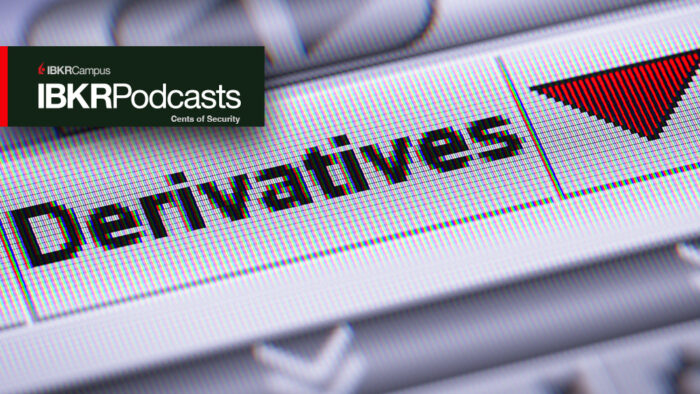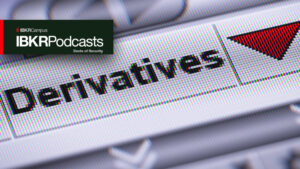By: Mobeen Tahir, Christopher Gannatti, CFA
When we think about electric vehicles (EVs), we see them as machines that need electrical power from the grid to run. They are like our computers and mobile phones, although naturally much bigger and requiring a lot more power. But EVs are soon going to force us to rethink this paradigm altogether.
We know that a large percentage of an EV’s cost, weight, volume and complexity lies in the battery. So, if the battery is the most prized component in an EV, can it be used better? Vehicle-to-grid technology (V2G) allows us to treat EVs like batteries on wheels. Instead of the vehicle only taking power from the grid, V2G enables it to also give power back to the grid, creating what is referred to as “bidirectional charging.”
The idea seems simple. Just let the current flow in the either direction. But why is this simple concept going to be a revolutionary breakthrough in the clean energy transition? And how might artificial intelligence (AI) facilitate it?
Why It Makes Sense
The International Energy Agency (IEA) has stated that, in a net zero scenario, the world’s battery storage capacity needs to rise 17 times by 2030 compared to 2020.1 What the IEA doesn’t specify is whether the storage must be stationary or mobile. Stationary capacity in the form of large energy storage systems is expanding quickly. However, its growth pales in comparison to the battery growth expected to be driven by electric vehicles (see figure below). Therefore, it makes sense to better utilize the most rapidly growing form of energy storage.
Total Storage Demand by Sector

Energy storage is also likely to be most effective if it is well-distributed. The entire purpose of energy storage is to manage the intermittency of renewable energy. Well-distributed energy storage across the grid could better help manage demand and supply and reduce transmission losses. Electric vehicles, naturally, are distributed across the grid given they are parked close to their owners.
Private cars generally sit parked around 95% of the time.2 This means that consumers pay for the convenience of having a car they can drive for the remaining 5%. If, when it is not being driven, the car can be used as a store of energy, we could start making use of the car 100% of the time. This is something that only EVs can make possible.
But Why Would A Consumer Do It?
Today, consumers who charge their EVs at home typically opt for a variable tariff to charge during off-peak times. Not only is this cheaper for the consumer, but it also helps manage the load on the grid. With bidirectional charging, they could charge at a cheap tariff during off-peak hours and give back to the grid during peak hours at a higher tariff. The car, thanks to its battery, could potentially help the user generate revenue.
This approach could also create enormous savings when homeowners or businesses consider installing solar panels. The battery storage cost can be a meaningful part of the total upfront costs of such systems. If the car can remove the need for another battery, or at least not a very large battery, it immediately creates a significant capital saving. When combined with solar technology in this way, the technology becomes even more appealing as the consumer could be generating their own energy and selling to the grid during peak hours at the most attractive tariff.
Now, some might argue that this additional grinding of the battery will result in faster depletion of battery life. Among the many factors that affect battery depletion is how often the charge level reaches either extreme, i.e., fully charged or fully discharged. EV manufacturers often recommend charging to no more than 80%. It is also advisable to not let the charge drop too low to preserve battery life, and of course to not risk getting stranded on the road. A 2017 University of Warwick study3 found that utilizing an EV battery in a V2G scenario does not necessarily harm its performance—it may even increase it. So, while more research is required to conclusively determine the impact of V2G on battery life, there are certainly ways to run the process optimally to maximize longevity.
What Has AI Got To Do with It?
V2G doesn’t necessarily need AI to function—it is a matter of electrical engineering. But AI will be integral in making the technology’s implementation practically viable.
From the consumer’s perspective, AI can help optimize the timing and magnitude of energy transfer between the vehicle and the grid. When should the consumer charge, when should they retain charge and when should they give back to the grid? And by how much? This optimization would consider user consumption patterns so there is always sufficient charge in the battery for road journeys and any excess is sold back to the grid. AI systems can also monitor and predict the health and performance of the battery, encouraging proactive maintenance to ensure their longevity and reliability.
From the grid’s perspective, V2G adds another variable to consider in addition to things like weather patterns, which determine power generation from renewables. In this case, user consumption patterns will need to be predicted to better manage demand and supply. Today, grid operators must match reasonably predictable demand patterns with supply. Once consumers become part of the supply mix, predicting supply will likely become harder, making the role of AI systems more important.
Is This All Just Science Fiction?
It isn’t. As with many things, regulation plays a crucial role. California, which is aggressively looking to reduce carbon emissions and last year prohibited the sale of internal combustion engine cars from 2035, is pondering a bill that would mandate that every EV sold in the state have V2G capability built in. This means that V2G is already attracting the attention of policy makers. This is a promising sign as it could encourage more progress in overcoming any regulatory hurdles before EV owners start selling energy to the grid.
From the industry’s perspective, several automakers have already introduced EV models capable of bidirectional charging. These include the Nissan Leaf, Ford F150 and Kia EV6, to name a few. Until it becomes widely adopted, V2G could be a way for automakers to gain a competitive advantage. Given most automakers have now worked out how to manufacture an EV, they have more bandwidth to figure out this next engineering challenge, which many claim won’t be too difficult.
Nissan is already in partnership with Eon to promote the use of V2G technology. Eon’s white paper4 on the topic makes a more detailed case on this.
The Way Forward for Investors
At WisdomTree, we believe V2G is an exciting emerging technology within the battery value chain. EVs, their batteries and the ecosystem they operate within all pursuing exciting innovations and lots of change in the way we power our cars, homes and lives. For investors, a diversified approach across the battery value chain could be a way to gain exposure to a broad set of potential opportunities. This includes today’s incumbent technologies, such as lithium-ion battery manufacturing, as well as emerging technologies like V2G and others.
Energy storage and the electrical grid have both received lots of attention in the context of the Inflation Reduction Act in recent years.
Similarly, we see that V2G represents something that exists, but that AI could have an additive impact on, in helping it to work more efficiently and effectively.
1 International Energy Agency, 2022.
2 Based on the Massachusetts Institute of Technology’s ‘Unparking’ project 2020.
3 Uddin, Kotub, et al. “On the Possibility of Extending the Lifetime of Lithium-Ion Batteries through Optimal V2G Facilitated by a Flexible Integrated Vehicle and Smart-Grid System.” WRAP, 15 Aug. 2017, wrap.warwick.ac.uk/88018/.
4 https://www.eonenergy.com/content/dam/eon-energy-com/Files/vehicle-to-grid/The Drive Towards A Low-Carbon Grid Whitepaper.pdf
—
Originally Posted July 12, 2023 – Could AI Turn EVs into Money-Making Machines?
Important Risks Related to this Article
For current fund holdings, please click on the respective tickers: WTAI, WBAT. Holdings are subject to risk and change.
WTAI: There are risks associated with investing, including the possible loss of principal. The Fund invests in companies primarily involved in the investment theme of artificial intelligence (AI) and innovation. Companies engaged in AI typically face intense competition and potentially rapid product obsolescence. These companies are also heavily dependent on intellectual property rights and may be adversely affected by loss or impairment of those rights. Additionally, AI companies typically invest significant amounts of spending on research and development, and there is no guarantee that the products or services produced by these companies will be successful. Companies that are capitalizing on innovation and developing technologies to displace older technologies or create new markets may not be successful. The Fund invests in the securities included in, or representative of, its Index regardless of their investment merit and the Fund does not attempt to outperform its Index or take defensive positions in declining markets. The composition of the Index is governed by an Index Committee and the Index may not perform as intended. Please read the Fund’s prospectus for specific details regarding the Fund’s risk profile.
WBAT: There are risks associated with investing, including the possible loss of principal. The Fund invests in equity securities of exchange-listed companies globally involved in the investment themes of battery and energy storage solutions (BESS) and innovation. The value chain of BESS companies is divided into four categories: raw materials, manufacturing, enablers and emerging technologies. Innovation companies are those that introduce a new, creative or different technologically enabled product or service in seeking to potentially change an industry landscape, as well as companies that service those innovative technologies. The Fund invests in the securities included in, or representative of, its Index regardless of their investment merit. The Fund does not attempt to outperform its Index or take defensive positions in declining markets and the Index may not perform as intended. Please read the Fund’s prospectus for specific details regarding the Fund’s risk profile.
Join The Conversation
If you have a general question, it may already be covered in our FAQs. If you have an account-specific question or concern, please reach out to Client Services.
Leave a Reply
Disclosure: WisdomTree U.S.
Investors should carefully consider the investment objectives, risks, charges and expenses of the Funds before investing. U.S. investors only: To obtain a prospectus containing this and other important information, please call 866.909.WISE (9473) or click here to view or download a prospectus online. Read the prospectus carefully before you invest. There are risks involved with investing, including the possible loss of principal. Past performance does not guarantee future results.
You cannot invest directly in an index.
Foreign investing involves currency, political and economic risk. Funds focusing on a single country, sector and/or funds that emphasize investments in smaller companies may experience greater price volatility. Investments in emerging markets, real estate, currency, fixed income and alternative investments include additional risks. Due to the investment strategy of certain Funds, they may make higher capital gain distributions than other ETFs. Please see prospectus for discussion of risks.
WisdomTree Funds are distributed by Foreside Fund Services, LLC, in the U.S. only.
Interactive Advisors offers two portfolios powered by WisdomTree: the WisdomTree Aggressive and WisdomTree Moderately Aggressive with Alts portfolios.
Disclosure: Interactive Brokers
Information posted on IBKR Campus that is provided by third-parties does NOT constitute a recommendation that you should contract for the services of that third party. Third-party participants who contribute to IBKR Campus are independent of Interactive Brokers and Interactive Brokers does not make any representations or warranties concerning the services offered, their past or future performance, or the accuracy of the information provided by the third party. Past performance is no guarantee of future results.
This material is from WisdomTree U.S. and is being posted with its permission. The views expressed in this material are solely those of the author and/or WisdomTree U.S. and Interactive Brokers is not endorsing or recommending any investment or trading discussed in the material. This material is not and should not be construed as an offer to buy or sell any security. It should not be construed as research or investment advice or a recommendation to buy, sell or hold any security or commodity. This material does not and is not intended to take into account the particular financial conditions, investment objectives or requirements of individual customers. Before acting on this material, you should consider whether it is suitable for your particular circumstances and, as necessary, seek professional advice.
Disclosure: ETFs
Any discussion or mention of an ETF is not to be construed as recommendation, promotion or solicitation. All investors should review and consider associated investment risks, charges and expenses of the investment company or fund prior to investing. Before acting on this material, you should consider whether it is suitable for your particular circumstances and, as necessary, seek professional advice.































Good stuff!!
Thank you, Firefly!